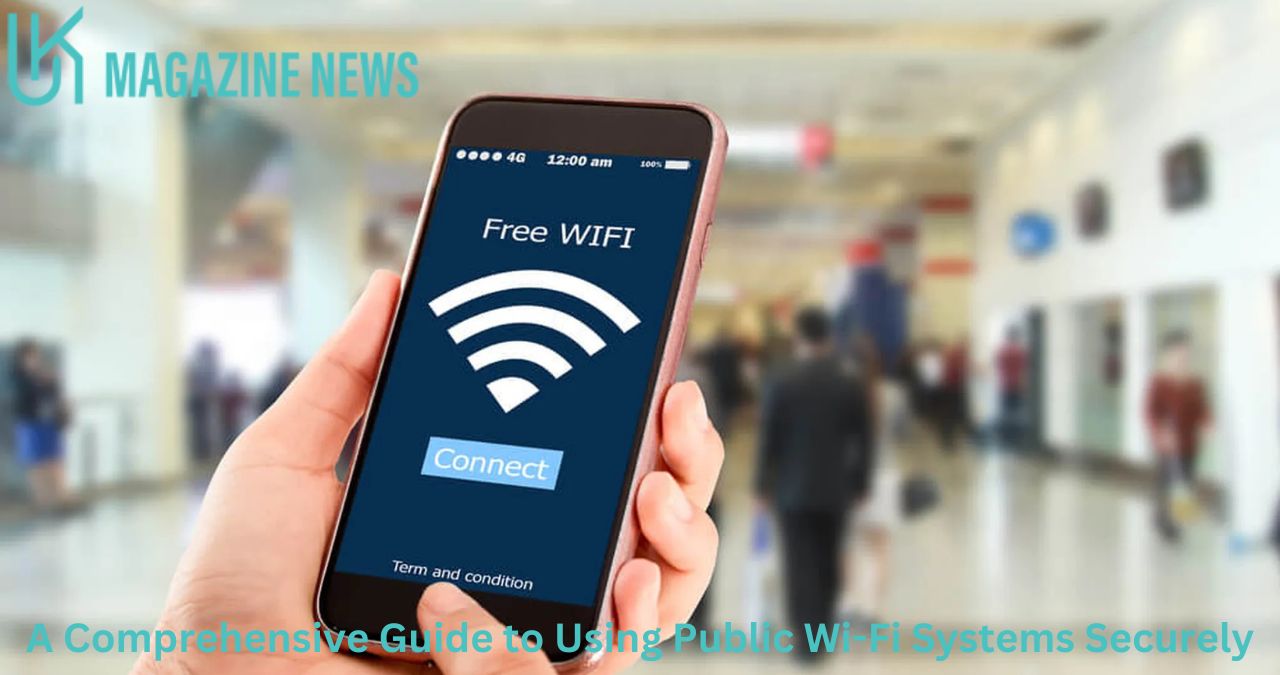Public Wi-Fi systems are incredibly convenient, allowing users to stay connected while on the go. Whether you’re at a coffee shop, airport, or library, public Wi-Fi networks offer easy access to the internet. However, they also present significant security risks. Cybercriminals often target these open networks, making it essential for users to take precautions to protect their data and privacy. In this guide, we will explore how to use public Wi-Fi systems securely and prevent potential threats from compromising your sensitive information.
Understanding the Risks of Public Wi-Fi
Before diving into security tips, it’s essential to understand the specific risks associated with public Wi-Fi networks:
- Unencrypted Connections: Many public Wi-Fi systems lack encryption, meaning the data transmitted between your device and the router can be intercepted. This leaves you vulnerable to attacks like packet sniffing, where hackers capture data from the network.
- Man-in-the-Middle Attacks: Hackers can position themselves between you and the website or service you’re accessing, allowing them to intercept or alter communications. This is a common threat on unsecured public Wi-Fi networks.
- Malware Distribution: Some hackers use public Wi-Fi networks to distribute malware, injecting malicious software into devices that connect to the network.
- Rogue Hotspots: Cybercriminals can set up rogue Wi-Fi hotspots that mimic legitimate ones, tricking users into connecting and then stealing sensitive information.
- Session Hijacking: Hackers can hijack your session, especially if you are logged into a website that doesn’t have HTTPS encryption, potentially gaining access to your online accounts.
How to Use Public Wi-Fi Systems Securely
To reduce the risks associated with public Wi-Fi, follow these best practices for staying secure while enjoying the convenience of public internet access.
1. Avoid Accessing Sensitive Information
When connected to a public Wi-Fi network, avoid accessing websites that require you to enter sensitive information, such as online banking platforms, shopping sites, or any services that store your credit card details. It’s best to conduct these types of transactions on a secure, private network.
2. Use a Virtual Private Network (VPN)
One of the most effective ways to secure your internet connection on a public Wi-Fi network is by using a VPN. A VPN encrypts all the data that passes between your device and the internet, preventing hackers from intercepting your personal information. Ensure the VPN you use is reputable and has strong encryption protocols.
3. Verify the Wi-Fi Network
Before connecting to a public Wi-Fi network, always verify its legitimacy. Check with the staff at the establishment offering the Wi-Fi to ensure you’re connecting to the correct network and not a rogue hotspot. Cybercriminals often create fake networks with names similar to the real ones to trick users into connecting.
4. Disable File Sharing and AirDrop
When using public Wi-Fi, make sure that file-sharing options like AirDrop (on iOS devices) or other file-sharing services are turned off. Keeping these features enabled can leave your device open to attacks and unauthorized access.
5. Enable Two-Factor Authentication (2FA)
Whenever possible, enable two-factor authentication for your online accounts. Even if a hacker manages to obtain your login credentials through a public Wi-Fi network, they won’t be able to access your accounts without the second authentication step, which is typically a code sent to your phone.
6. Keep Your Software Up-to-Date
Always ensure your device’s software is updated with the latest security patches. Operating system updates, browser updates, and security software updates address vulnerabilities that hackers might exploit, making your device more secure on public networks.
7. Use HTTPS Websites
When browsing on public Wi-Fi, prioritize websites that use HTTPS encryption. This type of encryption adds an extra layer of security to your data, making it harder for cybercriminals to intercept information. You can identify HTTPS websites by the padlock symbol next to the URL in your browser’s address bar.
8. Log Out of Accounts After Use
Make it a habit to log out of your accounts after using them, especially on public Wi-Fi networks. This reduces the chances of session hijacking, where hackers steal your login session to gain access to your accounts.
9. Monitor Your Device’s Activity
After using public Wi-Fi, monitor your device for any unusual activity. Check for signs of malware or unauthorized access. If you notice anything suspicious, disconnect from the network immediately and run a security scan using antivirus software.
10. Take Advantage of Pause Time Features
Some public Wi-Fi systems offer features like “pause time,” which can useful for managing your connection time and improving security. For example, lpb piso wifi 10.0.0.1 pause time login feature allows users to pause their internet session when not in use, reducing the window of opportunity for cybercriminals to intercept data. This feature can be incredibly beneficial for those who want to control their internet usage in public settings.
Additionally, the lpb piso wifi pause time feature can help users maintain their internet access in a secure manner, especially in areas where time limits are imposed on public Wi-Fi sessions. By pausing the connection when not needed, you can protect your device from prolonged exposure to potential threats.
Conclusion
While public Wi-Fi networks offer convenience, they come with inherent security risks that can compromise your data and privacy. By following the best practices outlined in this guide, you can minimize these risks and enjoy safe browsing on public Wi-Fi systems. Always be cautious, stay informed about potential threats, and take the necessary steps to secure your connection, such as using a VPN, avoiding sensitive transactions, and utilizing pause time features like those provided by LPB Piso Wi-Fi.
Public Wi-Fi can be a useful resource, but safeguarding your online activity is crucial to ensure your personal information remains secure from cybercriminals. Stay proactive and prioritize your security every time you connect to an open network.




